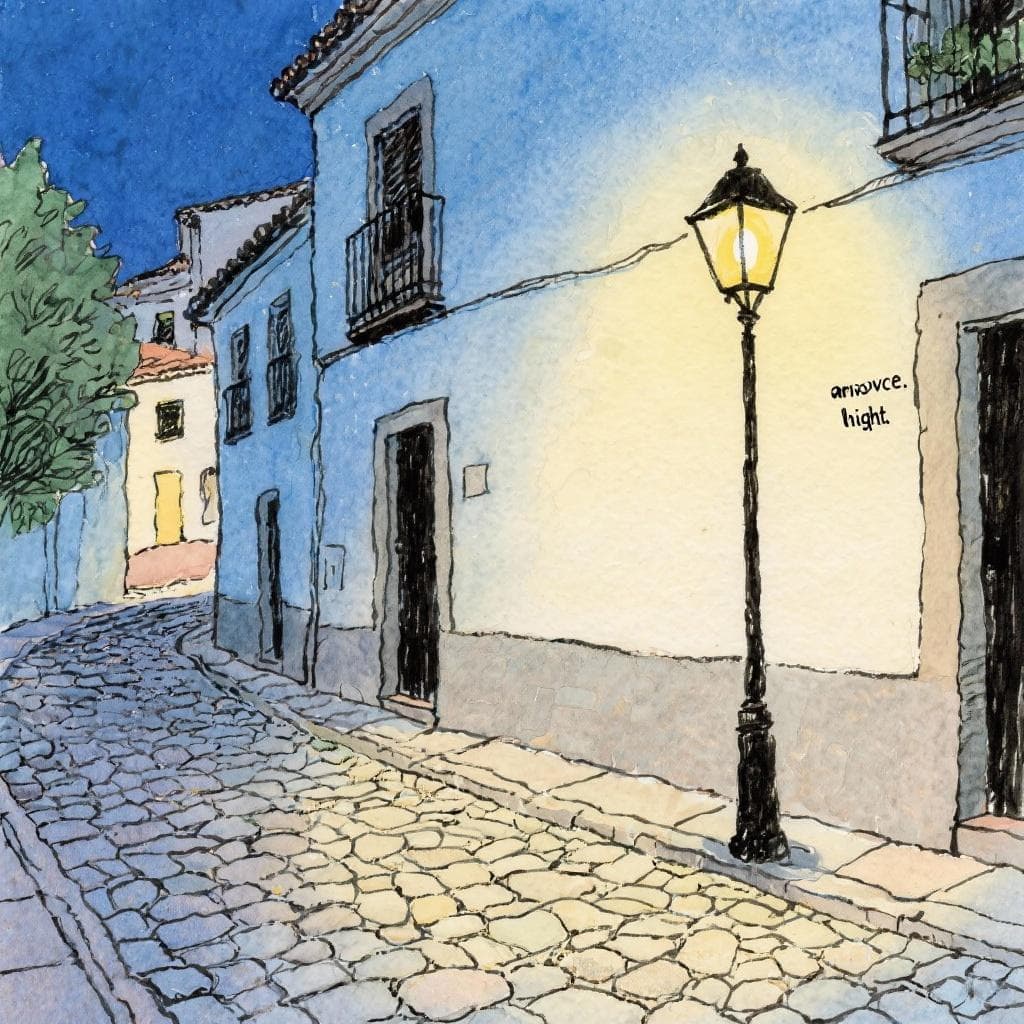Table of Contents
The Ultimate Guide to the Spanish Preterite Tense (Regular Verbs)
Ever wanted to tell a friend what you did last weekend, describe an amazing meal you ate on vacation, or simply say you finished your homework? To talk about these past events in Spanish, you'll need a trusty tool: the Preterite Tense (or el pretérito).
Think of the preterite as your storytelling superpower. It lets you talk about actions that are done, dusted, and complete. In this guide, we'll break down how to use the preterite tense with regular verbs, turning you into a past-tense pro in no time.

What Exactly is the Spanish Preterite Tense?
In a nutshell, the preterite tense is used for actions that happened in the past and are seen as completed. They had a clear beginning and a clear end.
Imagine you're looking through a photo album. Each picture captures a single, finished moment.
- You ate the cake. (It's gone now!)
- She visited Madrid. (The trip is over.)
- They bought a car. (The purchase is complete.)
All of these are perfect examples of when you'd use the preterite. It’s for the "snapshots" of the past.
Preterite vs. Imperfect
You might have heard of another past tense called the "imperfect." Don't worry about that one for now! While the imperfect describes ongoing past actions (like "I was eating"), the preterite focuses on completed ones ("I ate"). We're mastering the preterite first!
Your Toolkit: Conjugating Regular -AR, -ER, and -IR Verbs

The best part about regular verbs is that they follow a predictable pattern. Once you learn the endings for one type of verb (like -ar verbs), you know them for all regular -ar verbs!
Let's break it down. The process is simple:
- Take the infinitive verb (e.g.,
hablar). - Chop off the ending (
-ar,-er, or-ir). - Add the correct preterite ending based on who did the action.
Regular -AR Verbs
Let's use the verb hablarto speak as our example. We chop off the -ar to get our stem: habl-. Now, we add the preterite endings.
| Pronoun | Ending | Example: hablar | Translation |
|---|---|---|---|
| yo | -é | hablé | I spoke |
| tú | -aste | hablaste | you spoke |
| él/ella/usted | -ó | habló | he/she/you (formal) spoke |
| nosotros/as | -amos | hablamos | we spoke |
| vosotros/as | -asteis | hablasteis | you all (informal) spoke |
| ellos/ellas/ustedes | -aron | hablaron | they/you all spoke |
Let's see it in action:
- Ayer, yo hablé con mi madre por teléfono. (Yesterday, I spoke with my mom on the phone.)
- Tú compraste un regalogift para la fiesta. (You bought a gift for the party.)
- Ella miró la película anoche. (She watched the movie last night.)
- Nosotros viajamos a México el año pasado. (We traveled to Mexico last year.)
Heads Up!
Notice something familiar? The nosotros form in the preterite (hablamos) is identical to the present tense form! How do you tell the difference? Context is everything. If you see a word like ayer (yesterday), you know it's the past.
Regular -ER and -IR Verbs
Great news! Regular -er and -ir verbs share the exact same set of endings in the preterite. You learn one set, you know them both!
Let's use comerto eat (-er) and vivirto live (-ir) as examples.
The stem for comer is com-.
The stem for vivir is viv-.
| Pronoun | Ending | Example: comer | Example: vivir |
|---|---|---|---|
| yo | -í | comí | viví |
| tú | -iste | comiste | viviste |
| él/ella/usted | -ió | comió | vivió |
| nosotros/as | -imos | comimos | vivimos |
| vosotros/as | -isteis | comisteis | vivisteis |
| ellos/ellas/ustedes | -ieron | comieron | vivieron |
Example Sentences:
- Yo comí paella por primera vez. (I ate paella for the first time.)
- ¿Aprendiste algo nuevo hoy? (Did you learn something new today?)
- Él escribió una carta. (He wrote a letter.)
- Nosotros vivimos en Barcelona por tres años. (We lived in Barcelona for three years.)
- Ellos abrieron la ventanawindow. (They opened the window.)
How would you say 'She drank' in Spanish, using the verb 'beber'?
When to Use the Preterite: Key Trigger Words

Certain words and phrases are like giant, flashing signs that tell you to use the preterite. When you see these, think "completed action!"
Here are some of the most common preterite trigger words:
- ayer - yesterday
- anoche - last night
- anteayer - the day before yesterday
- la semana pasada - last week
- el mes pasado - last month
- el año pasado - last year
- hace [tiempo] - [time] ago (e.g.,
hace dos días- two days ago) - de repente - suddenly
- un día - one day
Examples in context:
- Ayer yo estudié para el examen. (Yesterday I studied for the exam.)
- Anoche ellos cenaron en un restaurante italiano. (Last night they had dinner at an Italian restaurant.)
- El año pasado mi familia y yo visitamos a mis abuelos. (Last year my family and I visited my grandparents.)
Arrange the words to form a correct sentence:
Watch Out! Common Preterite Pitfalls
As you get the hang of the preterite, there are a couple of common slip-ups to watch for.
1. The Sneaky Accent Mark
Accent marks are tiny, but they have a huge impact in the preterite. Forgetting one can change the entire meaning of your sentence. This is especially true for the yo and él/ella/usted forms.
Look at the difference between hablo (present tense) and habló (preterite tense).
Drag the handle to compare
Hablo means "I speak." Habló means "He/She/You (formal) spoke." That little line makes all the difference! Always double-check your accents on the -é and -ó endings.
2. Mixing up -AR and -ER/-IR Endings
It's easy to get your wires crossed and put an -ar ending on an -er verb, or vice-versa. A common mistake is to say "yo comé" instead of "yo comí."
Mnemonic Trick
To remember the yo forms:
- If it ends in -AR, think "ehhh, I did it!" -> -é
- If it ends in -ER or -IR, think "eeee, I did it!" -> -í
Put Your Knowledge to the Test!
Ready to practice? Try conjugating the verbs in parentheses in the preterite tense.
- Yo ______ (comprar) un libro nuevo ayer.
- Tú ______ (recibir) un paquete la semana pasada.
- Mi hermana ______ (bailar) toda la noche.
- Nosotros ______ (aprender) a cocinar paella.
- Ustedes ______ (correr) en el parque esta mañana.
Answer Key: 1. compré, 2. recibiste, 3. bailó, 4. aprendimos, 5. corrieron
Which sentence is correct? 'Last year we lived in Argentina.'
You've Got This! What's Next?
Congratulations! You've just taken a huge step in mastering Spanish past tenses.
Here are the key takeaways:
- The Preterite Tense is for completed past actions (snapshots in time).
- Regular verbs follow three patterns: one for -ar verbs, and a shared one for -er/-ir verbs.
- Watch out for trigger words like
ayerandanoche. - Don't forget those crucial accent marks!
Keep practicing, and soon you'll be telling all your past stories in Spanish with confidence. The next step on your journey will be tackling the irregular verbs in the preterite, which have their own unique patterns. ¡Buena suerte!